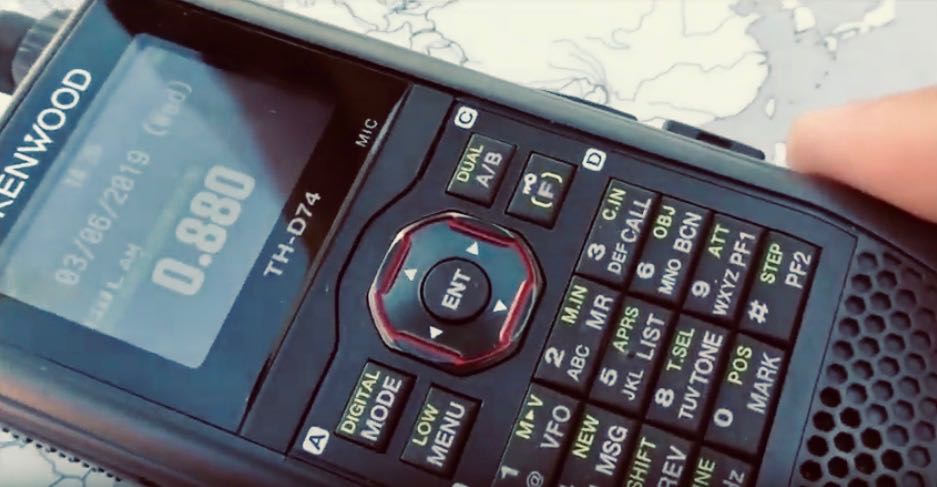Radio Waves: Stories Making Waves in the World of Radio
Because I keep my ear to the waves, as well as receive many tips from others who do the same, I find myself privy to radio-related stories that might interest SWLing Post readers. To that end: Welcome to the SWLing Post’s Radio Waves, a collection of links to interesting stories making waves in the world of radio. Enjoy!
Many thanks to SWLing Post contributors Troy Riedel, LG, Ron and the ARRL News for the following tips:
Radio Signals from Mars (Spaceweather.com)
How close is Mars? Close enough for radio reception. On Oct. 4th, amateur radio operator Scott Tilley picked up a carrier wave from NASA’s Mars Reconnaissance Orbiter (MRO) circling the Red Planet. Turn up the volume and listen to the Martian Doppler shift:
Tilley is a leader in the field of satellite radio. Dead satellites, zombie satellites, spy satellites: He routinely finds and tracks them. “But this was a first for me,” he says. “A satellite around Mars!”
It’s not easy picking up radio signals from distant planets. NASA does it using the giant antennas of the Deep Space Network. Tilley uses a modest 60 cm dish in his backyard in Roberts Creek, BC. This week’s close encounter with Mars set the stage for his detection.
“MRO’s signal is weak, but it is one of the louder signals in Mars orbit,” says Tilley. “The spacecraft has a large dish antenna it uses as a relay for other Mars missions. With the proximity of Mars these days, it was the perfect time to try.”[…]
Two More Astronauts Earn Amateur Radio Licenses (ARRL News)
Although the lockdown of Johnson Space Center (JSC) postponed amateur radio training and licensing over the past 7 months, NASA ISS Ham Project Coordinator Kenneth Ransom, N5VHO, was able to work with all of the new astronaut-class graduates, as well as offer some refresher courses with already-licensed astronauts. Licensed astronauts on the International Space Station (ISS) may operate the on-station ham radio equipment without restrictions.
Astronauts often participate in Amateur Radio on the International Space Station (ARISS) contacts with schools and groups on Earth.
NASA Astronaut Kayla Barron, who completed her introductory course in June and received basic ham radio operations training in late September, recently tested and received the call sign KI5LAL.
European Space Agency astronaut Matthias Maurer passed his amateur radio exam on July 30, and he got his basic ham operations training in July. He now is KI5KFH.
Astronauts Shane Kimbrough, KE5HOD, and Shannon Walker, KD5DXB, completed the refresher course earlier this year. Two other new astronauts are in the queue to take the Technician license exam. — Thanks to Rosalie White, K1STO[…]
M17 Aims to replace proprietary ham radio protocols (Hackaday.io)
While M17 might sound like a new kind of automatic rifle (as actually, it is), we were referring to an open source project to create a ham radio transceiver. Instead of paraphrasing the project’s goals, we’ll simply quote them:
The goal here should be to kick the proprietary protocols off the airwaves, replace DMR, Fusion, D-Star, etc. To do that, it’s not just good enough to be open, it has to be legitimately competitive.
Like some other commercial protocols, M17 uses 4FSK along with error correction. The protocol allows for encryption, streaming, and the encoding of callsigns in messages. There are also provisions for framing IP packets to carry data. The protocol can handle voice and data in a point-to-point or broadcast topology.
On the hardware side, the TR-9 is a UHF handheld that can do FM voice or M17 with up to 3 watts out. The RF portion uses an ADF7021 chip which is specifically made to do 4FSK. There’s also an Arm CPU to handle the digital work.[…]
Armed with a radio, Cambodian girl climbs tree to access education (SE Asia Globe)
When Cambodian schools closed due to Covid-19, poor internet access and a lack of minority language materials made distance learning in rural communities near impossible. But armed with a simple radio, children are rising above these obstacles to their education
Jumping down from the tree near her home, Srey Ka assumes her spot in the shade underneath as she adjusts the dials on her radio. Her pet piglet remains asleep at her feet, twitching his nose as he dreams, his belly full of leftover rice. Around her, cows meander by, their ringing bells competing with the sound of static from her radio.
While her school is still closed due to Covid-19 regulations, she still wears her Grade 3 uniform as she attempts to locate a signal. She’s listening out for distance learning programmes – six hours of educational radio broadcasts per week for children in Grades 1-3, some of which are in her ethnic minority language.
It was August and Srey Ka had just received a radio from international nonprofit Aide et Action, two weeks before her school reopened as pandemic measures eased in Cambodia in early September.
From the Phnong ethnic minority group, Srey Ka struggled to find learning resources in her language during school closures. Eager to cram as much as she can before returning to school, Srey Ka tied the antenna of her radio to the highest point of a tree to get the best reception. Even a clear radio signal is hard to come by in the small fishing village of Pun Thachea, located along a remote stretch of the Mekong river in Cambodia’s northeast Kratié province.[…]
Do you enjoy the SWLing Post?
Please consider supporting us via Patreon or our Coffee Fund!
Your support makes articles like this one possible. Thank you!



